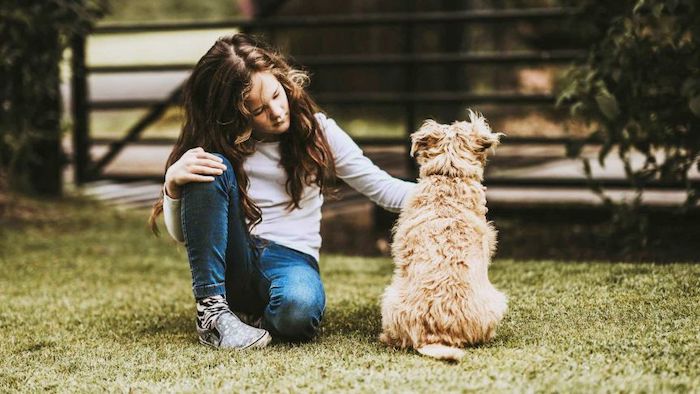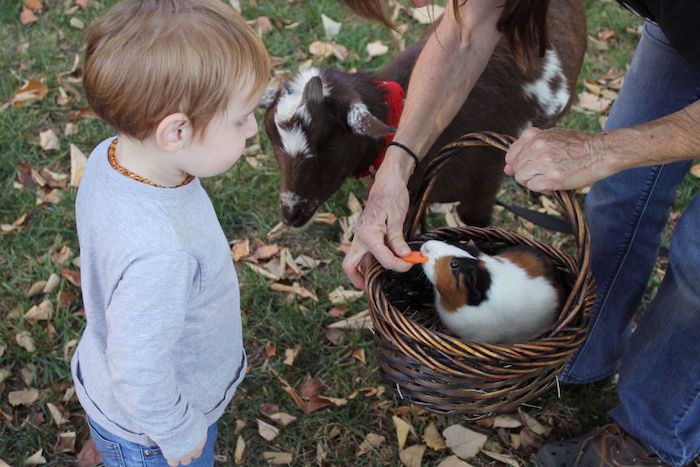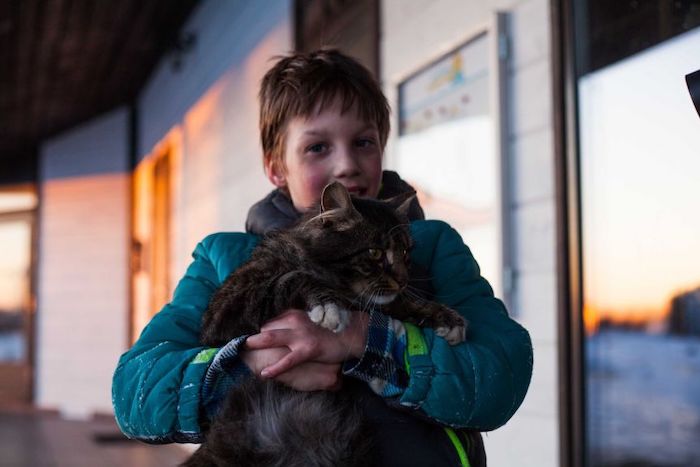If you think telling your child Fido, Fluffy or Feathers has “gone to live on a farm” is a good strategy when the family pet dies, think again.

By Kellie Scott
You’re likely missing an opportunity to help them grieve and learn about death, no matter their age, according to the experts.
But what you tell them and how involved they should be is dependent on developmental stage and personality.
Being prepared is an essential part of helping your child through the pet grieving process.
We spoke to a child psychologist, vet and mum-of-two who experienced the loss of a family pet for advice.
Why lying about a pet’s death won’t help
“Pet death is a very big opportunity to learn how to talk about death and how to cope with future death, like extended family, for example,” says Elizabeth Seeley-Wait, clinical psychologist and principal of a children’s psychology clinic.

Dr Seeley-Wait says the modelling a parent shows around processing and coping with the death will go “a long way for their children”.
“Everyone is different in their coping style, but what parents at least want is to be honest about what is going on, and as open as they can be in the process of feeling sad and going through those emotions over time.”
After all, she says, children will often catch you in a lie.
“And if not, they will figure it out later and feel pretty uncomfortable with that.”
What to do when your pet dies
Whether your pet dies naturally, in an accident or is euthanased, kids will have questions.
How you answer those questions will depend on their developmental stage and personality, says Dr Seeley-Wait.
“The younger the child, the more simple terms you should use, and you probably want to be more general,” she says.
When children reach the pre-teen and teenage years, naturally they are going to want more information, warns Dr Seeley-Wait.
“Parents should use their best instincts on that, because they will have a sense of whether their child can handle details.”
She says the children that ask a lot of questions tend to be worriers.
“Kids ask a lot of questions, but they also ask questions they can’t handle the answers to.”
What should be consistent through all the ages, she says, is children being involved in some way to grieve properly.
When Kasey Drayton decided to put down her 16-year-old dog Max, her daughter and son, aged nine and 11 at the time, knew it was coming.
“He had been sick for some time, so we were hoping he would pass away naturally, but that didn’t happen,” she says.
“We explained he was possibly in pain, and it was the kindest thing to do.
“There was a bit of resistance in that they didn’t want to lose him, but once they understood it was better for him, they were fine.”
How to decide if your child should attend the pet’s euthanasia
The younger they are, the less they need to see, recommends Dr Seeley-Wait.
“To be honest, there would be some teenagers who don’t really need to see that.”
Sydney vet Sandra Nguyen says in her observations, including children in the euthanasia can help them process the death.

“I feel it’s hard for a kid to understand that their pet has gone to the hospital and won’t come back,” she says.
“I’m relatively comfortable for kids to be there if we are putting the pet down — not all vets are the same.”
Kasey included her children in Max’s passing, something she says was a beautiful experience.
“On the day, we explained the vet will come here and it will be quite quick,” she says.
“We all took turns in holding him and saying goodbye. Tears were flowing.
When children are present for a euthanasia, Dr Nguyen keeps her language around the process as simple as possible.
She explains the euthanasia process as an injection that is an overdose of anaesthetic.
“I do tend to use pretty frank language, but I soften my voice,” she says.
“A friend of mine who is a childcare worker said not to say ‘put to sleep’ as kids can then associate sleep with dying.”
Dr Nguyen also prepares parents for how children might react.
“I’ve seen kids absolutely sobbing … but as they are leaving the pet hospital they will turn to Mum and Dad and ask for a new puppy,” she says.
“The parent can get quite upset that the child doesn’t seem to be mourning the loss.”
But ultimately, Dr Nguyen says having your child attend a euthanasia is a case-by-case situation.
“Some parents don’t want their kids’ last memories to be of the pet dying, and that is the same with adults — some people decide not to be there for the euthanasia themselves.”
How to deal with the aftermath of a pet dying
No-one grieves the same way, explains Dr Seeley.
In Kasey’s experience, her two children dealt with Max’s death differently.
“My daughter put a little shrine up in the bedroom and kept his collar and his old dog toy,” she says.
“She still refers to him and keeps his spirit alive, and that was her way of grieving.
“My son grieved quite differently. They both felt it acutely, but very different.”
Rituals like burying the pet or planting a tree are worth making time for, Dr Seeley-Wait says.
“Do something that commemorates the life of the pet,” she says.

“Those moments are pretty special and memorable. And at least really model to the child that you should take a moment out of your busy lives to commemorate the passing of someone important.
“Talk, remember their pet, share stories, and let them feel a part of the process of the ritual of letting a loved one go.”
In Kasey’s home, Max lives on.
His body was cremated, and his ashes are in an urn in the backyard with a plaque.
“We still very much talk about him. That sort of helps.”
Complete Article ↪HERE↩!
